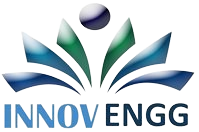In the highly regulated world of medical devices, quality is paramount. Ensuring the safety and effectiveness of these devices is not solely the responsibility of the manufacturer but also of their suppliers. This is where the importance of supplier management in ISO 13485, the international quality management standard for medical devices, comes into play. In this blog, we will explore the significance of supplier management in ISO 13485 and discuss best practices for maintaining top-notch quality control within the medical device industry.
Understanding ISO 13485
ISO 13485 is a globally recognized standard that sets the framework for a quality management system (QMS) specifically tailored to the design, development, production, and servicing of medical devices. Compliance with ISO 13485 is crucial for regulatory approval, market access, and most importantly, ensuring patient safety.
The Role of Suppliers
Suppliers are an integral part of the medical device manufacturing process. They provide essential components, materials, and services that directly impact the quality and safety of the final product. The performance and quality of suppliers can significantly affect a company’s ability to meet ISO 13485 requirements.
Best Practices for Supplier Management
1. Supplier Selection: Choosing the right suppliers is the first step. Conduct thorough evaluations to ensure they meet your quality standards. Assess factors like their quality management systems, production capabilities, and compliance with regulatory requirements.
2. Supplier Audits: Regularly audit your suppliers to assess their adherence to ISO 13485 standards. These audits can identify areas for improvement and help maintain a high level of quality control.
3. Supplier Agreements: Clearly define expectations and quality requirements in supplier agreements. These agreements should specify quality standards, regulatory compliance, delivery schedules, and dispute resolution processes.
4. Risk Assessment: Evaluate the potential risks associated with each supplier. Identify critical suppliers whose products or services could significantly impact your medical devices. Establish risk mitigation strategies for such suppliers.
5. Performance Monitoring:Continuously monitor supplier performance using key performance indicators (KPIs). Track metrics related to quality, on-time delivery, and responsiveness to issues. This data will help you identify trends and areas that need improvement.
6. Communication: Maintain open lines of communication with your suppliers. Encourage them to report any changes in their processes, materials, or quality systems promptly. Transparency is key to effective collaboration.
7. Non-Conformance Management: Develop robust processes for handling non-conformances. When issues arise, work closely with your suppliers to rectify problems and prevent recurrences.
8. Training and Support: Offer training and support to your suppliers, especially regarding ISO 13485 requirements. This can help them better understand your quality expectations.
9. Continuous Improvement:Implement a culture of continuous improvement with your suppliers. Encourage them to find innovative ways to enhance quality and efficiency.
Conclusion
Effective supplier management is a cornerstone of ISO 13485 compliance and, more importantly, patient safety. By following best practices for supplier management, medical device manufacturers can maintain the highest standards of quality control throughout their supply chain. This not only ensures compliance with ISO 13485 but also bolsters the reputation of the company and, most importantly, contributes to the well-being of patients who rely on these life-saving devices.
If you have any sort of inquiry feel free to utilize the 30 minutes Free Consultation that can be booked by email sales@innovengg.com.au.
